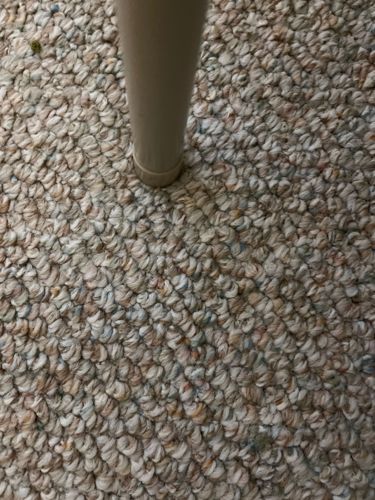Carpet Beetle
Scientific Name: Dermestes lardarius (Larder Beetle is a common species, but others like Anthrenus verbasci are also 'carpet beetles'). Given the context of a carpet, a species from the *Anthrenus* or *Attagenus* genus is more likely, e.g., *Anthrenus verbasci* (Varied Carpet Beetle) or *Attagenus unicolor* (Black Carpet Beetle). Without a clearer image of distinct features, a precise species cannot be identified, so "Carpet Beetle (various species)" is appropriate.
Order & Family: Order: Coleoptera, Family: Dermestidae
Size: Larvae: 1-5 mm; Adults: 2-5 mm

Natural Habitat
Indoors, larvae are found in carpets, rugs, upholstered furniture, clothing, blankets, stored foods, and museum specimens. Outdoors, adults are common in gardens and near flowers.
Diet & Feeding
Larvae feed on a variety of animal-based products, including wool, silk, feathers, leather, furs, pet hair, dried pet food, and dead insects. Adults primarily feed on pollen and nectar from flowers.
Behavior Patterns
Carpet beetle larvae prefer dark, undisturbed areas, feeding on organic materials. Adults are attracted to light and feed on pollen and nectar outdoors. They undergo complete metamorphosis with egg, larval, pupal, and adult stages. Larvae are known to shed their skins multiple times as they grow.
Risks & Benefits
Risks: Carpet beetles are considered household pests. Their larvae can cause significant damage to natural fibers and stored products. Some people may also experience allergic reactions (dermatitis) to the larval hairs. Benefits: In nature, they play a role as scavengers, breaking down organic matter.
Identified on: 8/11/2025